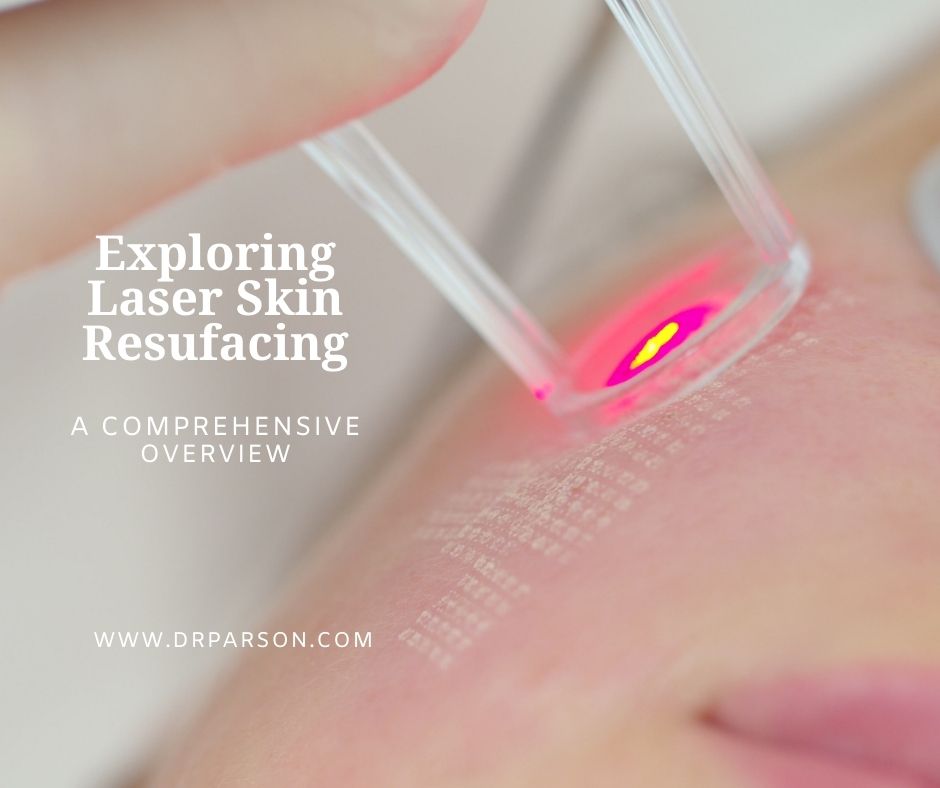
08 Apr Exploring Laser Skin Resurfacing in Medical Spas
In recent times, the landscape of skincare has undergone a significant transformation with notable advancements in medical technology. Laser therapy, a particularly popular innovation in the realm of medical spas, has become a focal point, especially concerning skin resurfacing. This detailed examination delves into the nuances of laser therapy, shedding light on its applications, advantages, and key considerations.
Insight into Laser Therapy
Laser therapy, an acronym for Light Amplification by Stimulated Emission of Radiation, employs concentrated light beams to selectively target specific skin areas. Within the domain of medical skin centers, the spotlight often falls on skin resurfacing—an intervention designed to enhance skin texture and appearance. Notably, laser therapy provides a non-surgical alternative with minimal downtime compared to invasive surgical procedures.
Types of Lasers Utilized at Parson Skin Center
Parson Skin Center offers a range of lasers tailored to address diverse skin concerns, broadly categorized as ablative and non-ablative lasers.
- Ablative Lasers: These lasers eliminate outer skin layers, prompting collagen production and fostering the development of healthier skin. Examples include CO2 and erbium lasers, which effectively target deep wrinkles, scars, and significant skin imperfections. The downtime associated with ablative laser therapy can range from seven days to several weeks, contingent upon skin type and treatment depth. Parson Skin Center proudly employs Candela CO2 laser technology.
- Non-Ablative Lasers: Unlike ablative lasers, non-ablative lasers penetrate the skin without removing layers, generating heat to stimulate collagen production. This type is suitable for milder concerns such as fine lines, uneven pigmentation, and mild scarring. Downtime for non-ablative laser treatments is typically minimal, lasting only a few days. At Parson Skin Center, the Candela Gentlemax Pro, and IPL and Resurfx machines are equipped with dual wavelengths for laser hair removal, vascular lesions, and skin treatments, is employed.
The Skin Resurfacing Procedure
Before exploring the merits and considerations of laser therapy, it is essential to grasp the general process of skin resurfacing.
- Consultation: The process commences with a thorough consultation between the client and a Certified Laser Technician. Skin type, concerns, and medical history are assessed to determine the most suitable laser treatment.
- Pre-Treatment Preparation: Depending on the chosen laser therapy, clients may receive guidance on preparing their skin by avoiding specific skincare products and medications. Adhering to pre-treatment guidelines is crucial for optimal results and minimizing the risk of complications.
- The Laser Procedure: The actual laser therapy session involves the precise application of laser energy to targeted areas. Protective measures, such as goggles, are employed to shield the eyes from laser light. The duration varies based on the treated area and laser type.
- Post-Treatment Care: Clients receive post-treatment care instructions, including sun avoidance, use of recommended skincare products, and follow-up appointments. Adherence to these instructions is vital for a smooth recovery and optimal outcomes.
Advantages of Laser Skin Resurfacing
- Enhanced Skin Texture: Laser therapy stimulates the growth of new, healthy skin cells, resulting in smoother and refined skin texture, particularly beneficial for those with rough or uneven skin.
- Wrinkle and Fine Line Reduction: Ablative lasers significantly reduce wrinkles and fine lines by stimulating collagen production and skin tightening, while non-ablative lasers are effective for milder concerns.
- Scar Reduction: Both laser types are commonly used to diminish the appearance of scars, including acne scars and surgical scars, contributing to a more even skin surface.
- Pigmentation Correction: Laser therapy addresses various pigmentation issues, such as sun spots and uneven skin tone, breaking down excess pigment for a more balanced complexion.
Considerations and Potential Risks
While laser therapy in medical skin centers yields impressive results, it is crucial to consider potential risks and factors influencing the procedure’s suitability for certain individuals.
- Skin Type: Different skin types react differently; darker skin tones may be more prone to pigmentation changes or scarring. Skincare professionals must assess the client’s skin type and customize the treatment accordingly.
- Recovery Time: Ablative lasers generally entail a more extended recovery period compared to non-ablative lasers, with downtime including redness, swelling, and peeling depending on treatment intensity.
- Sun Sensitivity: Laser-treated skin may be more sensitive to sunlight, necessitating diligent post-treatment care, including sunscreen use, to protect the skin and maintain results.
- Multiple Sessions: Optimal results often require multiple laser sessions. Clients should understand the commitment involved and set realistic expectations regarding the number of sessions needed for their specific skin concerns.
Laser therapy for skin resurfacing in medical spas has emerged as a transformative solution for individuals seeking non-invasive procedures to address diverse skin concerns. A comprehensive understanding of laser types, procedural steps, and potential benefits and risks is essential for making informed decisions. As with any cosmetic procedure, consultation with a qualified skincare professional is imperative to assess individual suitability and tailor the treatment plan for optimal results. With ongoing technological advancements, laser therapy continues to be a promising avenue in the pursuit of youthful and rejuvenated skin.
